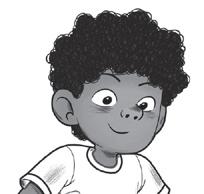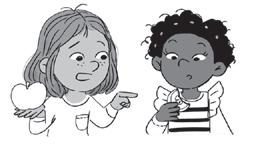HOW A–Z for MAT MAN ® and ME IS ALIGNED TO THE SCIENCE OF READING
Letter Learning
Our approach ensures that students understand the alphabetic principle by connecting to related early literacy skills, so they grasp how letters, sounds, and words relate to meaning.
Connected Text

The Student Letter Books tie learning together. Each book was written to connect code-based foundational skills and meaning-based comprehension skills so that reading is purposeful.
A–Z for Mat Man® and Me targets alphabet knowledge and gives students the necessary tools to properly decode and encode. (National Early Literacy Panel, 2008; Piasta et al., 2022).
The program teaches students explicitly and sequentially through multimodal instruction and practice. Teachers use direct instruction for explicitly correlating letter sounds and symbols and children build routines for learning each letter.
Background
Meaning Making
Our approach recognizes that oral language is critical for early readers, and children benefit from talking about story elements in text.
Alphabet knowledge is one of the first critical steps on the path to reading words, beginning a fundamental phonics sequence that works as a strong predictor of later literacy development.
Explicit Instruction in Grapheme-Phoneme Correspondences




“Young learners must develop an awareness of the symbols that constitute the alphabet” (Reutzel et al., 2019).
Multimodal Letter Learning



“Knowledge about letters—their shapes, their names, and their linguistic functions—plays an important role in the development of reading and spelling ability” (Trieman et al., 2008).
Integrated Approach Inclusive of Code-Focused and Meaning-Focused Skills
“The ease with which children acquire foundational skills in two domains of early literacy—code-focused skills (letter knowledge and phonemic awareness) and meaningfocused skills (oral language and comprehension)—shapes their future reading development” (Ortiz et. Al, 2012).
“Children who are better able to simultaneously consider letter sound and semantic (meaning) information about words are better comprehenders in the short and long term” (Duke & Block, 2012).
Equitable, Inclusive Learning
“The challenge is that ultimately children need access to both code-focused and to meaning-focused skills, and that instructional approaches that prioritize the code for low-scoring readers (who are likely to come from less advantaged households) may inadvertently reduce their access to activities that support meaning making” (Snow, 2017).


References
Duke, N. K., & Block, M. K. (2012). Improving reading in the primary grades. The Future of Children, 55-72.

Ehri, L. C. (2014). Orthographic mapping in the acquisition of sight word reading, spelling memory, and vocabulary learning. Scientific Studies of Reading, 18(1), 5-21.
Foorman, B., Beyler, N., Borradaile, K., Coyne, M., Denton, C. A., Dimino, J., ... & Wissel, S. (2016). Foundational Skills to Support Reading for Understanding in Kindergarten through 3rd Grade. Educator’s Practice Guide. NCEE 2016-4008. What Works Clearinghouse.
Jones, C. D., Clark, S. K., & Reutzel, D. (2013). Enhancing alphabet knowledge instruction: Research implications and practical strategies for early childhood educators. Early Childhood Education Journal, 41(2), 81-89.
National Early Literacy Panel (NELP). (2008). Developing early literacy: Report of the national early literacy panel. Washington, DC: National Institute for Literacy. Ortiz, M., Folsom, J. S., Al Otaiba, S., Greulich, L., Thomas-Tate, S., & Connor, C. M. (2012). The componential model of reading: Predicting first grade reading performance of culturally diverse students from ecological, psychological, and cognitive factors assessed at kindergarten entry. Journal of Learning Disabilities, 45(5), 406-417.
Piasta, S. B., Logan, J. A., Farley, K. S., Strang, T. M., & Justice, L. M. (2022). Profiles and predictors of children’s growth in alphabet knowledge. Journal of Education for Students Placed at Risk (JESPAR), 27(1), 1-26.
Reutzel, P., Mohr, K. A., & Jones, C. D. (2019). Exploring the relationship between letter recognition and handwriting in early literacy development. Journal of Early Childhood Literacy, 19(3), 349-374. Snow, C. E. (2017). Early literacy development and instruction: An overview. The Routledge international handbook of early literacy education, 5-13.
Treiman, R., Pennington, B. F., Shriberg, L. D., & Boada, R. (2008). Which children benefit from letter names in learning letter sounds?. Cognition, 106(3), 1322-1338.
